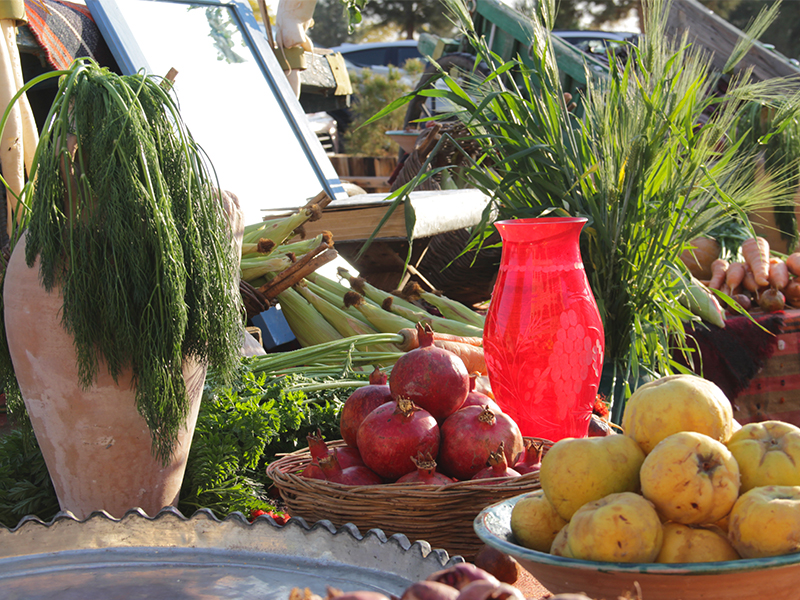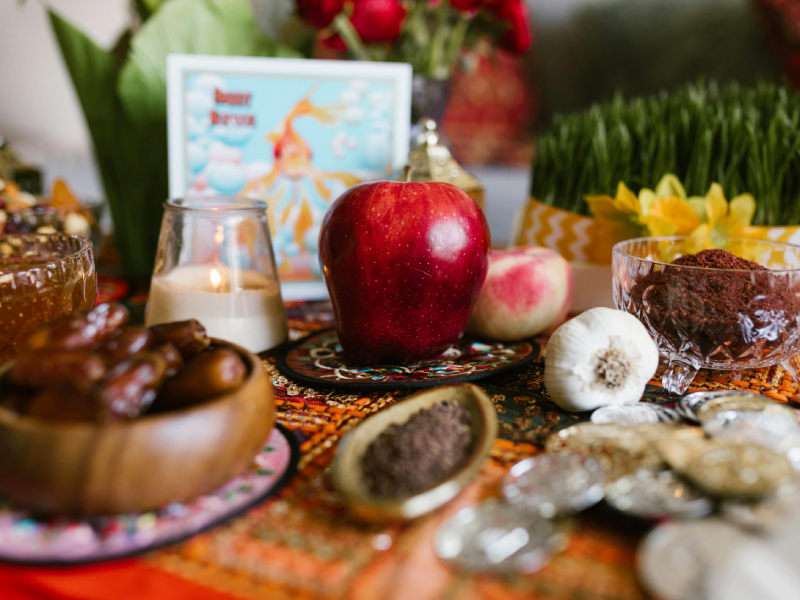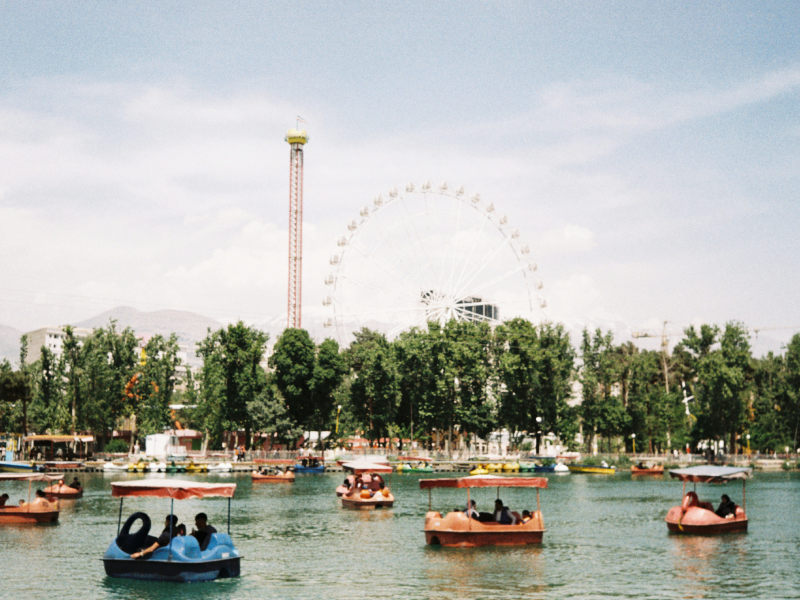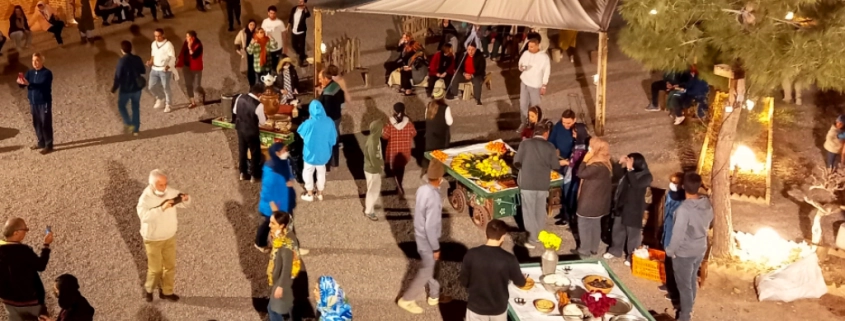Top Persian Festivals and Celebrations
Festivals and celebrations have always been part of every ethnic group and culture, bearing diverse histories, customs, heritage, and stories to be told. Among the many festivals existing all around the globe are the Iranian Festivals and traditions that have been cherished and recognized by millions of people for thousands of years. Due to the presence of numerous ethnic groups in Iran, the country boasts countless Persian Festivals and Celebrations with distinctive dancing and performances, traditional clothing, musical instruments, ornamentations, and many more.
In this article, we will delve into the Ancient Persian Festivals and their stories, so stay with us for more information.
Iranian Festivals and Celebrations
The festivals of ancient Iran are among the oldest historical celebrations in the world, some of which have been registered in the UNESCO list of Iran’s spiritual heritage. By studying the historical documents left from ancient Iran, researchers have discovered the date of birth of these celebrations. Ancient Persian celebrations are divided into different categories.
Unfortunately, with the passage of time, some of these Iranian festivals have long been forgotten for years. Here, in addition, we will provide you with a list of Festivals in Iran and introduce you to these forgotten Persian festivals and bring them back to life again from the earlier days of ancient Persia.
Zoroastrianism Festivals in Ancient Iran
According to history, Persian festivals and traditions have been very important to its people and are celebrated in Iran every year. In the past, the people of Iran followed the religion and beliefs of Zoroastrianism before the coming of Islam. Zoroastrianism’s most crucial concepts are condemning the evil and protecting the good. Based on this notion, the people of ancient Iran used to hold large festivals to celebrate good deeds and establish unity and empathy among themselves.
The Avestan root of the word “Yasn Festival” from the time of Zoroastrianism translates to “praise and worship,” which shows the nature of Zoroastrian celebrations.
The festivals of ancient Persia were held on various occasions. A significant part of these Persian festivals and celebrations was the monthly and occasional celebrations.

In these Persian festivals, Iranians showed their praise to the Zoroastrian God, Ahura Mazda, and worshiped him several times throughout the year. “Amesha Spenta” are the seven virtuous divine entities and pure attributes springing from Ahura Mazda. This title was also used for the second month of the Persian calendar, now called “Ordibehesht.”
In the ancient Iranian calendar, every day had a name for itself, and the naming of a day and a month at the same time led to a monthly festival on that day; in this way, each month had its celebration. Occasional Persian festivals were also held on the days dedicated to the creation of the world by Ahura Mazda.
Each of these monthly festivals has separate performances, music, and way of dressing, and they are respectively: Farvargan, Ordibeheshtgan, Khordadgan, Tirgan, Amurdadgan, Shahrivargan, Mehrgan (honoring the ancient deity, Mithra), Abangan, Azargan, Jashn of Dey, Bahmangan, Sepandarmazgan, and six Persian festivals dedicated to the Amesha Spenta, the divine entities in charge of (animal creation, fire, metal and minerals, the earth, the waters, and finally plant creation).
Mehrgan Festival
Mehrgan festival is one of the most important Persian festivals, which is held on the 16th day of Mehr month (the 7th month of the Persian calendar). This celebration dates back to the second millennium BC and is more than 4000 years old. Mehr in Persian translates to light and brightness, friendship, bond and affection, and connection. The word also means going against lies and backbiting, evil, and darkness.
According to Shahnameh, an epic book written by the great Persian poet Ferdowsi, the era of Zahhak’s rule (The villain of the story) was a time of oppression for Iran, and finally, Fereydoun (A hero) confronted him and removed him from the kingdom and imprisoned him in Mount Damavand and the people of Iran celebrated the great Mehr festival (Mehrgan) out of gratitude for this victory that they received.

According to historical sources, the name of this festival was named Mehrgan after the name of the goddess Mehr or Mitra. Mitra is one of the most valuable goddesses and the source of goodness, friendship, and truth. She is also portrayed as a goddess who is enemies with lies, impurity, and mischief.
Celebrating Mehrgan was accompanied by joy, dancing, stomping, and exchanging gifts with one another. On this day, people would sweep the houses and streets, wear purple clothes, prepare various dishes, read poetry, and play traditional instruments.
Sepandarmazgan Festival
Sepandarmazgan is one of the oldest Persian festivals celebrated in Iran. Although this festival has been forgotten by many, some families still treasure it even to this day. Sepandarmazgan is celebrated for praising the guardian goddess of pious and benevolent women.
On this day, women are honored and usually appear in new clothes and shoes. Women who are kind and chaste, righteous and pious, who gave birth to good children are thanked and praised by the other members of the family, as well as receiving gifts from their husbands.
On the day of the Sepandarmazgan festival, women are exempted from daily and regular work at home and other activities; instead, the men and the boys in the family take over their current duties at home. For more information on this ancient festival, read the Sepandarmazgan Festival on our website.
Nowruz Festival
As a foreigner interested in the Iranian cultural heritage and traditions, you might ask, what is the main Festival in Iran? To be exact, the most significant festival that has been celebrated for millenniums in both Iran and other places is no other than the Nowruz Festival, also known as the Persian New Year.
The historical Nowruz Festival has been regarded as one of the most important celebrations in Iran since the oldest dynasties of Iran. This celebration is held at the beginning of April and is the commencement of the new solar year of the Persian Calendar.

In the past, Nowruz was divided into two parts: Small Nowruz and Big Nowruz, and the first day of April was called Small Nowruz. The first five days of April were also the time of the New Year’s celebrations, which were held in public areas.
Over time, Iranians have inherited this ancient festival from different tribes in the region, a festival with a special color and theme illustrating the Iranian identity and a symbol of the connection between Iran’s tribes and peoples.
Nowruz is considered to be the beginning of the resurrection of nature, the time for the growth and birth of plants. Moreover, it is believed that along with nature, Iranians should start a new era with a new spirit by wearing new clothes, cleaning their house thoroughly, and revisiting their loved ones.
Haft-Sin
In the history and customs of Eid-e Nowruz, seven items whose names start with the 15th alphabet in Persian called “Seen or Sin” (س) have to be placed on a table, which creates the haft-sin altogether. The items in the Nowruz Haft Sin Table are divided into two types:
Items that have a symbolic aspect: such as Sir – garlic, Samanu – a sweet paste, Sabzeh – wheat grown on a plate, Senjed – oleaster, Seeb – Apple, Serkeh – Vinegar, Somagh – Sumac, and sometimes SEKE – coins are placed on the Haft-sin Table as well along with painted eggs, two candles, a mirror to represent a bright reflection to our lives, and a Quran.
Items that are edible and are for serving guests: all kinds of nuts like pistachios, hazelnuts, almonds, and other nuts, traditional or modern sweets such as Qottab, Panj loz, Yazdi Cake, modern pastries, etc.

Nowruz, with the official title “International Nowruz Day,” has been registered as a cultural and spiritual heritage of mankind by UNESCO, and this day is also considered one of the holy days and religious holidays of Zoroastrians and Bahais people.
Sizdah Bedar (Nature’s Day)
In the Iranian culture, Sizdah Bedar meaning “going out on the thirteenth” is the 13th day of the month of Farvardin, which is the first month of the Persian year. This festival comes after the celebration of the Nowruz Holidays.
Sizdah Bedar is a day reserved for connecting to Earth’s nature, and for this reason, it is also called the Day of Nature. This festival is one of the ancient traditions and the most important customs common among Iranians. This day is a public holiday in Iran, which ends the Nowruz Holidays on the 13th day.
Every year, at the start of a new year, when flowers bloom, and after the twelve days of the Nowruz holiday, Sizdah Bedar is the time when people have to leave their homes and spend their time in nature. Families usually go out in parks or vast lands for an enjoyable picnic, play sports in parks, such as badminton or football, the children play with a kite, and more.
One of the significant customs in Sizdah Bedar is when each member of the family ties the leaf strands of Sabzeh (the grown wheat on the Haft-Sin table), making a wish, and throwing the Sabzeh in a river or a stream for the wish to be granted.
Once the Sizdah Bedar ceremony comes to an end, the Nowruz holiday is over, and people return to their normal lives and resume their work and activities in the new year.

In the mythological culture of ancient Persia and many other nations, the number thirteen was ominous, and people believed that unfortunate events and bad omens would happen on this day, so on the thirteenth of Farvardin, even for a short period of time, people left their homes and went to nature.
This event was celebrated to protect themselves from disasters and to commemorate this day in nature. Nowadays, the number thirteen is no longer considered an unfortunate number; instead, it has more of a superstitious aspect.
According to historians, the thirteenth day of every month in the old Persian Calendar is dedicated to the angel Tir or Tishtrya (related to Sirius Star), which was a holy and blessed day.
Chaharshanbe Suri
Chaharshanbe Suri is a unique festival celebrated right before the Nowruz Festival, which is before the arrival of the new year, and it has a special importance for the people of Iran. The roots of this festival are in the ancient rituals of Iranians and are still prevalent in different forms among the survivors of Aryan tribes.
Chaharshanbe Suri is composed of two words, Chaharshanbe meaning Wednesday (the last Wednesday of the year) and Suri (derived from the word Surik meaning red), and together, this tradition is called the Red Wednesday.
To perform this ceremony, the locals make small and large fires placed in a row such as three, five, or seven large fires are lit. People from the oldest to the youngest must jump over these fires at least three times each. This action is a way to demonstrate how Iranians set aside the weaknesses, illnesses, and worries of the past year. They light the fire, start the new year with confidence and bliss, and let themselves enjoy the excitement of jumping over the fire.
While jumping over, Iranians sing various songs in which they ask for a blessing, health, fertility, and purity, such as a common folk song “Your redness is from me, my yellowness is from you.”

Redness refers to the blazing fire in the heart, and yellowness refers to an ill appearance. Breaking jars, fortune-telling, cooking soup, sprinkling water, shawls Andaazi, Ghashogh Zani (Hitting jars with a spoon to make gentle sounds), etc. are also among the interesting and attractive performances and customs of this night.
Yalda Night Festival (Shabe Yalda)
In the distant past, Iranians spent the night of Yalda or Shabe Cheleh around the fire until the dawn of the morning, celebrating and dancing, and they served their guests with fruits such as pomegranates, persimmons, watermelons, apples, etc.
Today, despite the fact that there has been a distance between the people and the traditions and customs of the past due to modern life, you can still see the presence of ancient Iranian traditions on occasions such as Yalda night.
Shabe Yalda festival or Yalda festival is celebrated even today by gathering and spending the longest night of the year with family members. The ritual of this night is to eat special nuts, pomegranates, watermelons, and various sweets and fruits, all of which have symbolic aspects and are a sign of abundance, blessing, health, and happiness.
On this night, it is customary to read the poems of the great poet of Persia, Hafez Shirazi, and the elders of the group entertain the younger ones by telling stories and introducing them to stories from the past.

According to the ancient Iranians, Yalda is a night that must be spent in light and fire until the dawn of the morning so that the devil will not have a chance to mischief people and ruin the land.
Sadeh Festival (Jashne Sadeh)
Jashne Sadeh or Sadeh Festival meaning “The Celebration of the Century” is the biggest fire festival and one of the oldest rituals known in ancient Iran, which is held forty days after the Yalda Night Festival by the Zoroastrian people as a sign of gratitude for God’s blessings. This celebration symbolizes the importance of light, fire, and energy in life.
Sadeh Festival begins around the sunset of the tenth day of the 11th month of the Persian calendar, called Bahman. This festival is held with a bonfire on the top of the mountains and on the roofs of houses.
Sadeh Festival is one of the most extraordinary ceremonies performed by the locals of Iran and does not have any ties with religious aspects, and all the stories related to it are non-religious. Jashne Sadeh has not only been spread among Iranians but also many other people from different countries.
Golab Giri Festival
Rose water, or Golab, is a fragrant extract of the Damask rose flowers, which is often obtained using special local and traditional techniques. Iran has approximately seven thousand years of experience in the cultivation of Damask Roses and has always been the source of rose water production in the world market.
The city of Kashan and its surrounding areas are full of Damask rose gardens. The most fragrant and aromatic roses of Iran are obtained from this desert and dry region in Kashan. For many years, the region of Qamsar (a district in Kashan) has been called “Golab.”
This region is one of the most crucial centers for the cultivation of Damask roses with the largest and most fragrant flowers in Iran. Qamsar has one of the most unique, original, and technical methods of distilling and producing rose water.

The history of the methods of distilling and extracting Damask rose water or Golab efficiently roots back to the ancient ritual of the “Golab Giri Festival,” which is commonly celebrated in Kashan today.
The festival of decorating the flowers, as well as the thousand-year-old ceremony of Damask Rose picking in the Qamsar district and other flower-rich areas of Kashan, starts every year from the beginning of May and continues until the end of June.
With the beginning of the rose picking season, flower pickers (locals who pick the roses) start picking Damask flowers in the flower fields from early morning, before sunrise. They believe that these roses will be more fragrant before sunrise.
Watching the Golab Giri Festival during spring is one of the top things to do in Kashan.
Final Word
In Persian festivals and holidays are some of the most important ways to discover about the culture and the heritage of Iranians from the ancient periods. Most of these Persian festivals are celebrated in full splendor up to this day by millions. Iran is a country with an ancient civilization and history. It possesses an eccentric culture with special customs and traditions.
Each of these Iranian festivals has its wisdom and philosophy. Despite that many of Iran’s important festivals have fallen from prosperity with no sign of them in writings and books, some of them are still active and are celebrated every year, such as Nowruz Eid, Mehrgan, Yalda, and Sadeh.
Are you planning to travel to Iran and looking for an Iran resort? Consider Matinabad Eco-resort.





Leave a Reply
Want to join the discussion?Feel free to contribute!